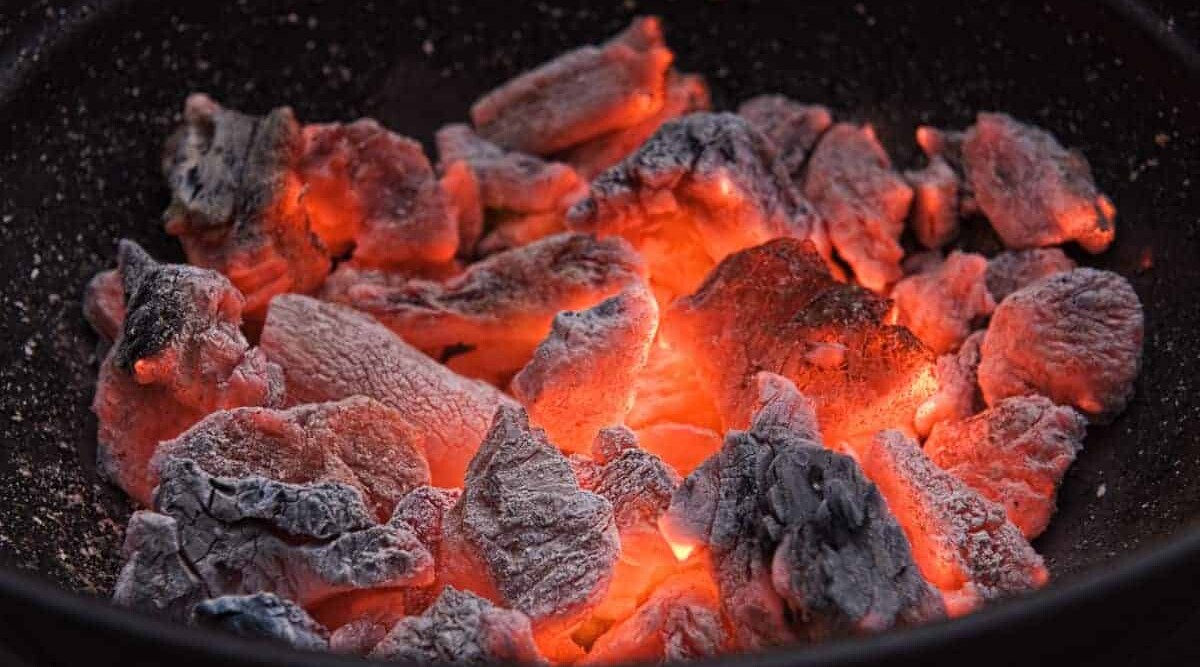
I have a good friend who we sometimes call “Mr. Safety.”
Unfortunately, it’s an ironic nickname gained from incidents involving alcohol and fireworks, and an over-stuffed backyard fireplace shooting a pillar of flames 6 feet into the air.
Mr. Safety is not allowed near the barbecue.
Today, you’re going to learn to be an actual Mr. Safety (or Ms. Safety) when it comes to your charcoal grill.
Unlike propane gas grills, you cannot turn off a charcoal grill to put out the fire when you’ve finished cooking. So, how do you deal with the still-burning coals when you’re ready to shut it down?
In this article, I’ll teach you how to safely extinguish your charcoal grill and dispose of the ash and used charcoal. Plus, you’ll learn how to save unused charcoal for later, and I’ll share a few things not to do with lit charcoal.
First, let’s answer this burning question…
Jump to:
Why Do I Need to Extinguish My Charcoal Grill?
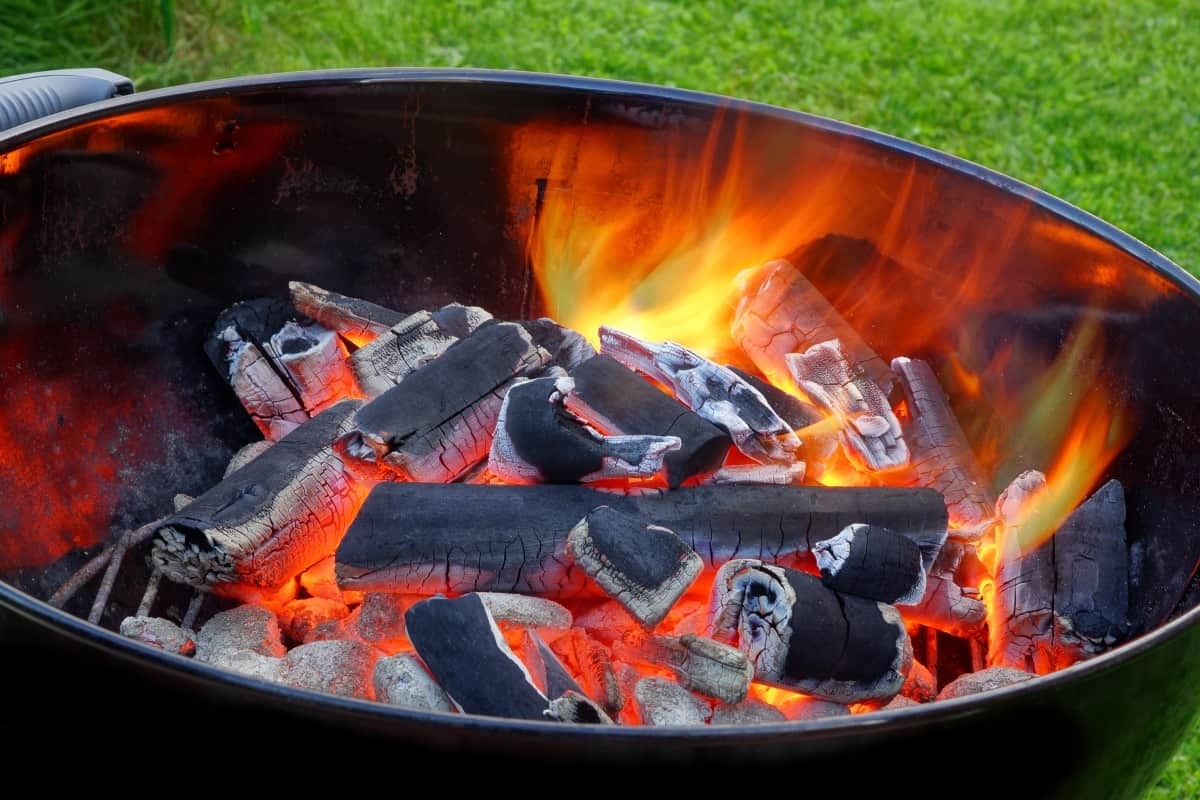
You’re finished grilling your food, so you’re finished with the grill, right? Not so fast — there are still lit lumps of charcoal in there. The charcoal will continue to burn until it’s completely extinguished unless you put it out yourself.
If you’ve used a lot of charcoal, that could take many hours. During that time, it’ll smolder away unattended. It becomes a risk for children, pets, unaware adults, and even your property. How so?
Well, if you’re not stationed at the grill, it would be easy for someone else to assume it’s out and, therefore, not hot.
A burn from a hot grill can be severe. Or, suppose an animal crashes into it and knocks it over, spilling hot coals everywhere? A few lit coals in the grass or on wood decking could start a serious fire.
Environmentally speaking, you’re releasing carbon monoxide and carbon dioxide needlessly into the air. Plus, you’re wasting charcoal you could potentially use again. (And we’ll talk about that more later on.)
Over at Food52, they tell us that charcoal can stay hot for up to 24 hours, or even longer. If you try to dispose of coals that aren’t totally out, you risk starting a fire.
Last, but certainly not least, the best lumpwood charcoal, and even the more affordable briquettes just aren’t cheap! If you can extinguish them, you can re-use this charcoal later, saving money.
Step-by-Step Instructions for How to Put Out A Charcoal Grill
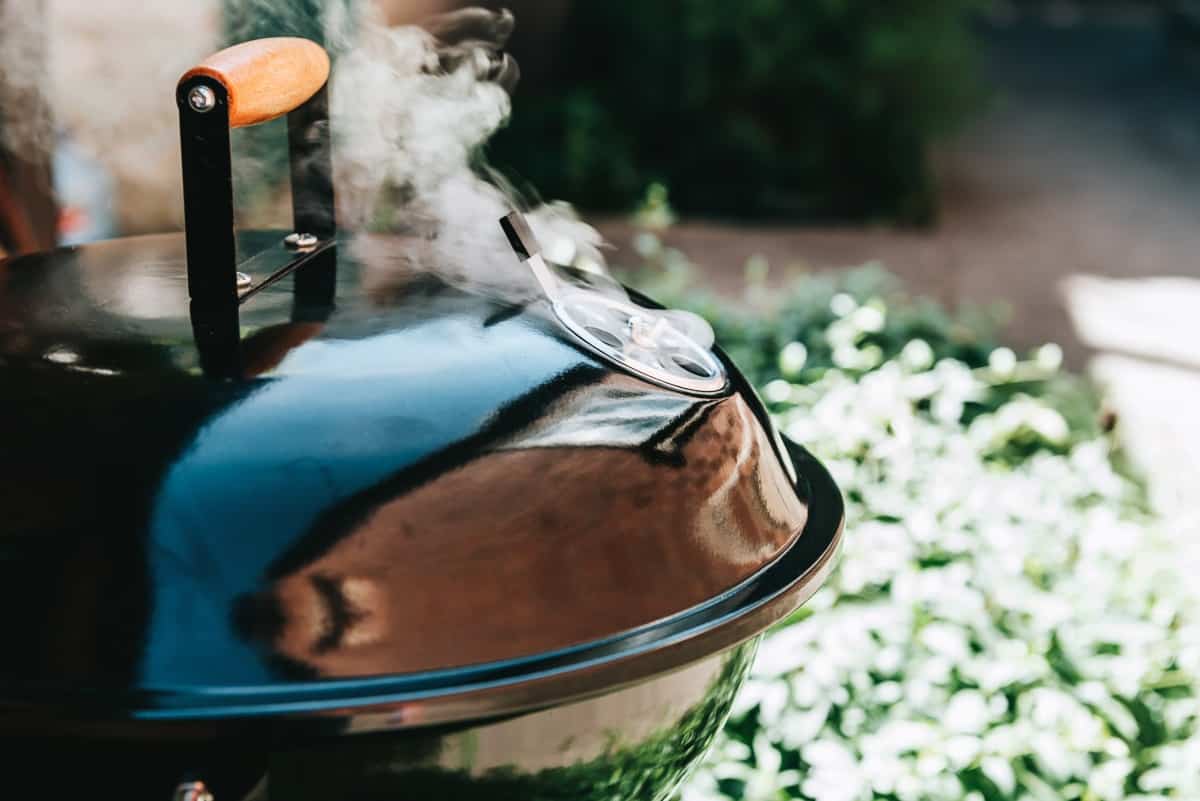
There are a lot of opinions around the internet on how best to snuff out your charcoal. Here’s what I think is the safest and cleanest method:
- Put the lid on and close the top and bottom vents.
Charcoal, like anything, needs oxygen to burn. Closing the vents effectively suffocates the charcoal after they burn up whatever air is trapped inside. - Wait 4 to 8 hours for the charcoal to go out and the grill to cool down.
Yes, that’s a long time to wait. But, that’s how long it can take for all the embers to die and the grill to cool off. During that time, make sure your grill is safely out of harm’s way or blocked off. - Scoop out and dispose of the ash and spent charcoal
If your grill has an ash dump, use it to get out as much ash as possible. Always collect it in a metal container, never plastic. Scoop the remaining ash and charcoal out of the bottom of your grill. Kingsford, one of the best-known makers of charcoal briquettes, recommends collecting the ash and charcoal on a large sheet of aluminum foil. Wrap it all up in the foil and put it in a metal ashcan. Using this method, there is probably zero chance of any still-live embers setting anything on fire. - Salvage any reusable charcoal
If there are any lumps of charcoal that look like they’ll be good for another day, pull them out before you throw everything away. Use metal tongs, just to be safe, and either put them back in your grill or, and this is a better idea, store them in a fire-proof container.
A big thanks go out to The Online Grill for their excellent look at this topic.
Can I Pour Water On My Charcoal to Put it Out?
There is no doubt that water is fire’s arch-enemy. Pouring a tub of water over your coals will put them out. But that doesn’t mean you should do it.
As with most aspects of barbecuing, there is disagreement on this one. Kingsford says to go ahead and use water to extinguish your charcoal quickly. “Spray away” and “Drown ’em good” is how they put it.
On the other hand, Rockwood, another charcoal company, recommends against using water. They’ve provided three pretty darn good reasons, too:
- The thermal shock caused by pouring cold water into a hot grill could crack your cooker
- The sudden cloud of steam is a burn hazard
- You might wash still-burning coals right out the bottom of the grill
Here’s another good reason — it creates a sludgy mess in the bottom of your grill. If that stuff hardens, you’re left with clogged vents, stuck dampers, and a big clean-up job. Cleaning a charcoal grill is hard work enough, without it making worse!
Our suggestion is only to use water if you absolutely must pack-up your grill and go in short order. For example, if you’re camping or tailgating. In those cases, use the minimum amount of water possible and then transfer the whole mess to a metal can for safe transport.
What to Do In An Emergency
On rare occasions, a fire can get out of hand, even in a barbecue. Most often, the culprit is grease dripping down from the food onto the hot charcoal. When the grease causes the flames to shoot up from the fire pit, it’s called a flare-up.
Most flare-ups are easily controlled if you know what to do. In fact, we’ve got a helpful article about that exact subject right here: Preventing and controlling flare-ups.
If the fire gets out of control, what do you do?
Here’s what you don’t do — don’t throw water on it. Pouring water on a grease fire sprays flaming grease everywhere, which, as you can imagine, is a bad thing. If you can’t imagine it, watch this video:
Your best bet is to put the cover back on the grill to cut off the oxygen and smother the flames. Use extreme caution and wear heat-proof gloves. Failing that, reach for your extinguisher to put out the fire — every griller should have one nearby.
How Can I Save Unused Charcoal?
As mentioned earlier, any charcoal that isn’t totally used up is worth saving. Unfortunately, even after covering your grill and closing the vents, it will continue to burn for a while.
What’s left behind, you can absolutely use again. But, is there a way to save even more of your charcoal?
If you’re really frugal, you can douse charcoal, dry it out, and use it again. Here’s what you do:
- Fill up a metal bucket with cold water.
- Put on your heat-proof gloves and get your metal tongs ready.
- Use the tongs to extract a single piece of charcoal.
- Dunk the charcoal in the water for about 60 seconds.
- Transfer the extinguished coal to a non-flammable surface.
- Repeat for each lump or briquette you want to save, arranging them in a single layer.
- Allow to air dry in the sun.
- Once completely dry, store in a fire-proof container until needed.
For the best results, mix in new charcoal with your reclaimed charcoal for your next cook session.
This method may not work with inexpensive briquettes. The cheap stuff tends to crumble if it’s been wet. Plus, briquettes made with starter agents (which we don’t recommend anyway), may be difficult to relight after they’ve had a bath. Save this tip for high-grade briquettes and natural lump charcoal.
Of course, charcoal isn’t terribly expensive, really. We’ll leave it up to you to decide if it’s worth all this effort.
Final Thoughts
With any luck, you’ve read this article before lighting up your charcoal grill! Now that you know what to do, go enjoy a safe and thrifty barbecue.
We’ve got lots more information on charcoal grilling and smoking to help you get the most from your barbecue. Be sure to poke around the site and bookmark the stuff you like.
I also invite you to share links with your friends and to join our community on social media. A little BBQ inspiration on your feed makes the day a lot better!


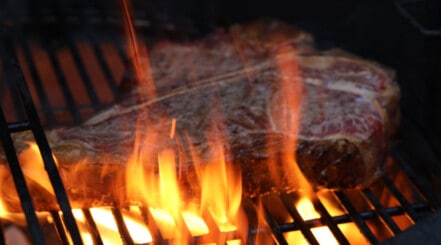
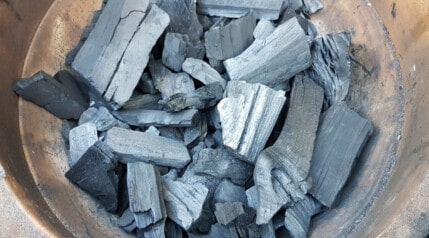
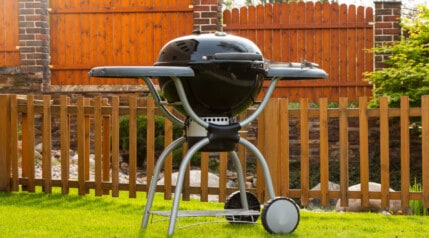
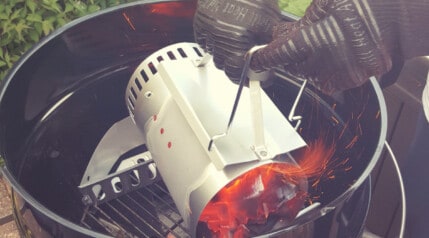
Cheers for the shoutout, Mark!
Love the new site design too 🙂
Thanks, Ben. I feel it was time. The old site looked like a high school HTML and CSS project…and not a very good one! Lol.
48 hours? I have shut my weber down this way hundreds of times and touched the coals the next day with bare hands without a hint of warmth. If coals were still burning for 2 full days, there would be nothing but ash.
Lol … 100% agreed! That should be 4 to 8 hours, not 48 hours. Corrected it now. Thanks, Matt.
Great article! Due to a move we need to move to charcoal from gas. While using our smoker grill as a traditional grill, the coals are hot FOR HOURS after we are done cooking. Will they go out quicker in a regular (non-smoker) grill? Thanks!!!
Hard to say, Beth.
How long they stay lit depends on size of smoker, how well sealed so after closing vents how much oxygen is still getting in. How well insulated the smoker / grill is (how well it holds heat), how big your charcoal fire was to start with, etc. And so on. SO it’s impossible to say for sure. Only way to know is to go through with it, and time it I’m afraid.
Great Article Mark! Thanks, for sharing ❤️